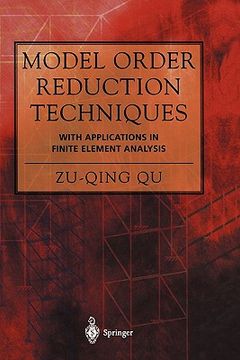Share
model order reduction techniques: with applications in finite element analysis
Zu-Qing Qu
(Author)
·
Springer
· Paperback
model order reduction techniques: with applications in finite element analysis - Qu, Zu-Qing
Choose the list to add your product or create one New List
✓ Product added successfully to the Wishlist.
Go to My Wishlists
Origin: U.S.A.
(Import costs included in the price)
It will be shipped from our warehouse between
Friday, June 07 and
Tuesday, June 25.
You will receive it anywhere in United Kingdom between 1 and 3 business days after shipment.
Synopsis "model order reduction techniques: with applications in finite element analysis"
Despite the continued rapid advance in computing speed and memory the increase in the complexity of models used by engineers persists in outpacing them. Even where there is access to the latest hardware, simulations are often extremely computationally intensive and time-consuming when full-blown models are under consideration. The need to reduce the computational cost involved when dealing with high-order/many-degree-of-freedom models can be offset by adroit computation. In this light, model-reduction methods have become a major goal of simulation and modeling research. Model reduction can also ameliorate problems in the correlation of widely used finite-element analyses and test analysis models produced by excessive system complexity. Model Order Reduction Techniques explains and compares such methods focusing mainly on recent work in dynamic condensation techniques: - Compares the effectiveness of static, exact, dynamic, SEREP and iterative-dynamic condensation techniques in producing valid reduced-order models; - Shows how frequency shifting and the number of degrees of freedom affect the desirability and accuracy of using dynamic condensation; - Answers the challenges involved in dealing with undamped and non-classically damped models; - Requires little more than first-engineering-degree mathematics and highlights important points with instructive examples. Academics working in research on structural dynamics, MEMS, vibration, finite elements and other computational methods in mechanical, aerospace and structural engineering will find Model Order Reduction Techniques of great interest while it is also an excellent resource for researchers working on commercial finite-element-related software such as ANSYS and Nastran.
- 0% (0)
- 0% (0)
- 0% (0)
- 0% (0)
- 0% (0)
All books in our catalog are Original.
The book is written in English.
The binding of this edition is Paperback.
✓ Producto agregado correctamente al carro, Ir a Pagar.

